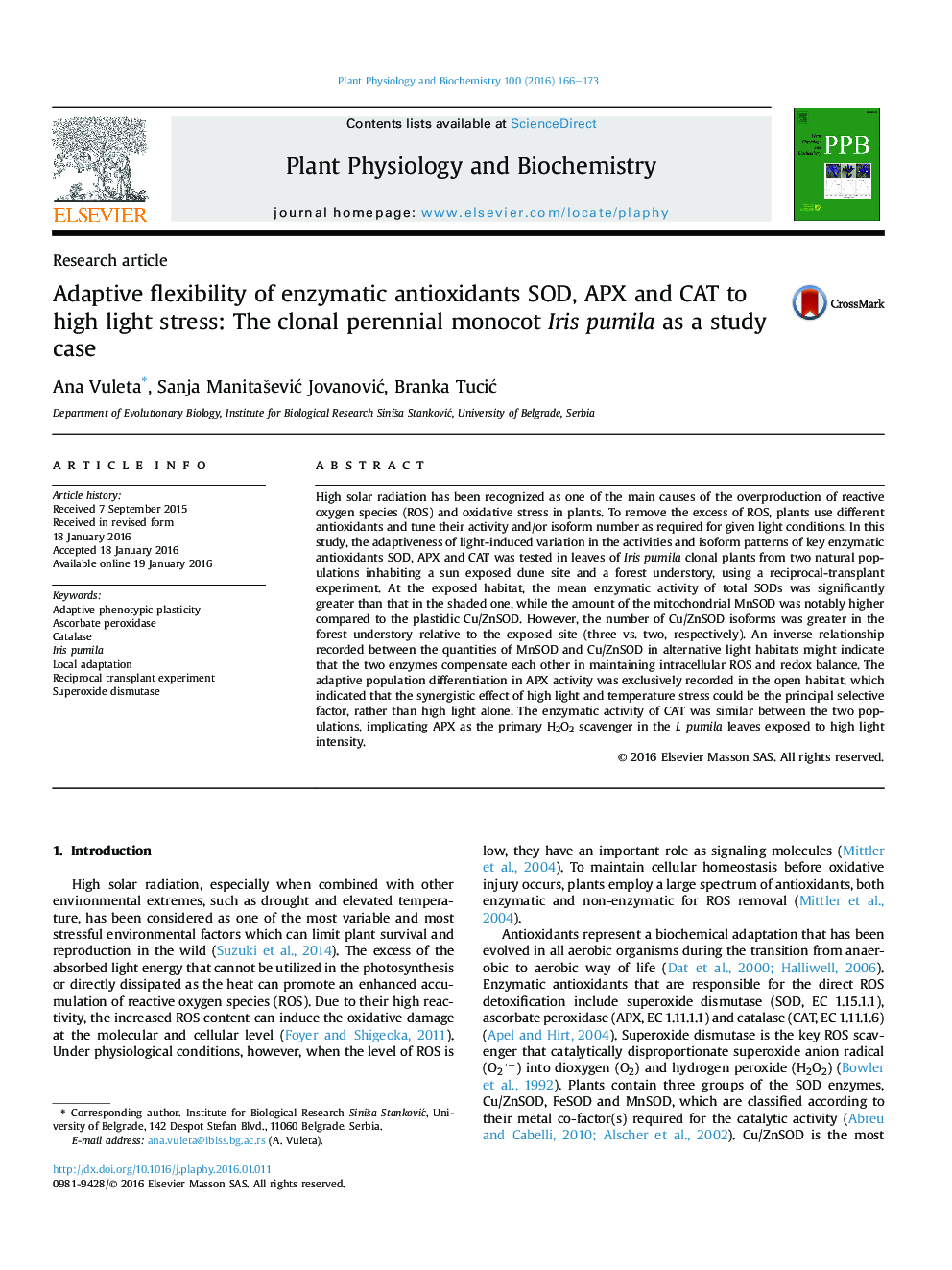| کد مقاله | کد نشریه | سال انتشار | مقاله انگلیسی | نسخه تمام متن |
|---|---|---|---|---|
| 2015811 | 1541921 | 2016 | 8 صفحه PDF | دانلود رایگان |

• MnSOD had a higher, while Cu/ZnSOD a lower activity at an open than a shaded habitat.
• Populations from the alternative light habitats varied genetically in the APX activity.
• Plasticity of APX activity to light was genetically distinct between the populations.
• The mean CAT activity was significantly lower at an open compared to a shaded habitat.
• Plasticity of the SOD/(APX + CAT) ratio appeared to be highly population-specific.
High solar radiation has been recognized as one of the main causes of the overproduction of reactive oxygen species (ROS) and oxidative stress in plants. To remove the excess of ROS, plants use different antioxidants and tune their activity and/or isoform number as required for given light conditions. In this study, the adaptiveness of light-induced variation in the activities and isoform patterns of key enzymatic antioxidants SOD, APX and CAT was tested in leaves of Iris pumila clonal plants from two natural populations inhabiting a sun exposed dune site and a forest understory, using a reciprocal-transplant experiment. At the exposed habitat, the mean enzymatic activity of total SODs was significantly greater than that in the shaded one, while the amount of the mitochondrial MnSOD was notably higher compared to the plastidic Cu/ZnSOD. However, the number of Cu/ZnSOD isoforms was greater in the forest understory relative to the exposed site (three vs. two, respectively). An inverse relationship recorded between the quantities of MnSOD and Cu/ZnSOD in alternative light habitats might indicate that the two enzymes compensate each other in maintaining intracellular ROS and redox balance. The adaptive population differentiation in APX activity was exclusively recorded in the open habitat, which indicated that the synergistic effect of high light and temperature stress could be the principal selective factor, rather than high light alone. The enzymatic activity of CAT was similar between the two populations, implicating APX as the primary H2O2 scavenger in the I. pumila leaves exposed to high light intensity.
Journal: Plant Physiology and Biochemistry - Volume 100, March 2016, Pages 166–173